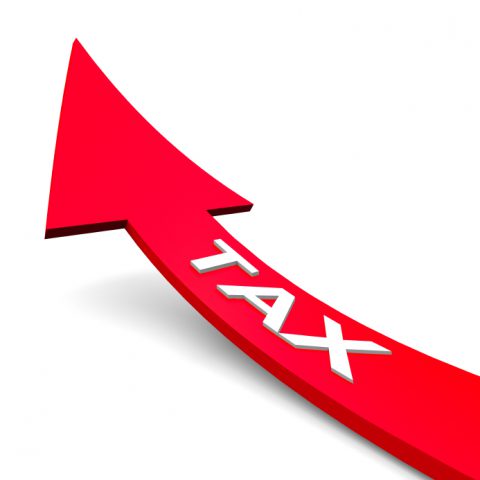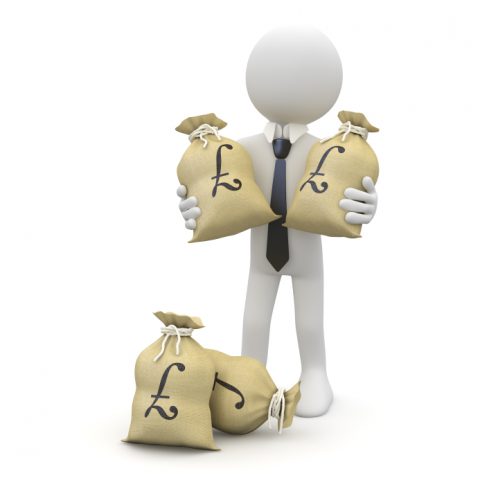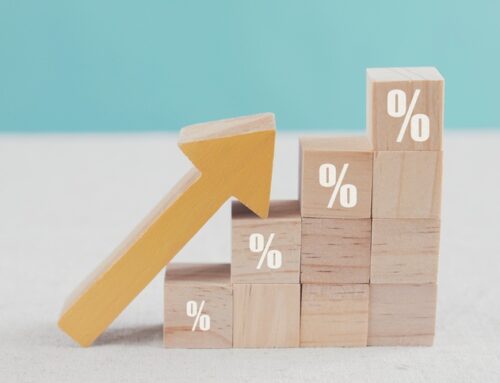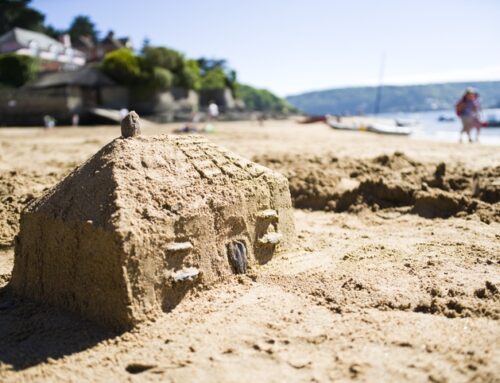Home » Uncategorised »
Are shares now a better investment than buy-to-let?
This article is an external press release originally published on the Landlord News website, which has now been migrated to the Just Landlords blog.
With the industry still reeling from George Osborne’s latest tax hikes on the buy-to-let market, many landlords are set to feel the pinch more sharply in the coming months.
Following the Chancellor’s cut to mortgage interest relief, the move announced in last week’s Autumn Statement to introduce a 3% rise in Stamp Duty has left many investors thinking of selling up.
This increase will see an additional £7,500 added onto the typical costs of purchasing a home worth £250,000. The two blows forced upon the sector in quick succession have lead many to question whether buy-to-let is going to head towards an irreversible slide.
Over the past twenty-five years, the average property price has risen from £68,823 to £202,689, an increase of 295%. During the same period, the FTSE All Share has grown at a rate of 9.6% per year.
Considering the latest hits on the buy-to-let market, could investing in shares now be more profitable than investing in property?
Buy-to-let
The Daily Mail has constructed an investigation that looks further into the profitability of both buy-to-let and stock market investment. For both types of investment, the newspaper has a fictional £50,000.
This will obviously equate to a 25% deposit on a property worth £200,000. This loan size can secure a five-year fixed-rate mortgage at 3.59% with specialist lender Accord. With buy-to-let mortgages usually being interest-only, mortgage broker London & Country suggests that with this deal, interest payments would amount to £449 per month over 25 years, totalling £5,385 per year.
Mortgage fees will also need to be added, which in this case would amount to £2,625. However, the extra stamp duty tax, which comes into effect on April 1st 2016, must also be factored in.
Under the changes, the property investor must pay 3% on the first £125,000 of the value of their accommodation, compared to nothing at present. For properties with value between £125,000 and £250,000, a 5% tax is being enforced, as opposed to the previous 2%.
Other costs
In addition, there are also other associated costs to add. These include:
- Legal fees, averaging £1,200
- A home-buyers report, totalling £500
- Standard Valuation, worth £250
These features total £12,075 and more often than not, need to be paid upfront. This means that an investor needs to find £62,000 in order to invest £50,000 directly into a property. If not, this will leave just £38,000 left for a deposit, which ultimately will mean taking on a smaller mortgage.
This is where buy-to-let can get a little confusing for would-be landlords, as there is a further test that must be passed in order to get a mortgage.
A bank will only lend to buy-to-let landlords if the rent that is to be potentially made on the property is 25% more than the mortgage payment. However, the rate of mortgage interest usually used by banks is higher than the one eventually paid, to give themselves more insurance. In the Daily Mail’s example, the rate used is 5.24% instead of 3.59%.
To this end, if the house worth £200,00 was to be purchased, a landlord would need to make £820 in rent.
Passing this test however is not the end of the costs. Aspiring landlords will need buildings and contents insurance, which averages at around £200 per year. Of course, there are then the generic running costs attributed to maintaining a property that also need to be seriously considered and budgeted for.
Tax must also be taken very seriously, with any profit made on a buy-to-let investment being taxable as if it was an income.
Mortgage interest tax relief
There is good news for landlords with some running costs being deductible from any profits. At the present time, this includes mortgage interest at whatever the highest rate of tax stands at. From next year though, tax reliefs are to change.
In the period between April 2016 and 2020, the amount of mortgage interest that is able to be offset against the higher tax rate will be lowered to the basic rate of just 20%. In essence, this means profits will be reduced as tax bills will rise. Using the £200,000 home as an example, the expected income will be £10,200.
Under the new regulations, to calculate the initial tax bill, landlords will have to work out 20% of the total income-in this instance £2,040. A higher rate taxpayer will be charged 40%, so £4,080. In both cases, a basic-rate tax relief of 20% on the mortgage interest of £5,385 will be calculated, amounting to £1,077.
This is then to be deducted from the first amount, depending on the tax rate. In turn, this will leave a tax bill of £963 for a basic-rate payer and £3,003 for higher-rate.
Finally, this and the mortgage interest that has been paid in the year must be deducted from the overall income. For this example, this will leave a total income after tax of £3,852 for a basic-tax payer or £1,812 for a higher-rate payer.
Will more expensive house prices lead to more money?
One of the most attractive features about property investment is the fact that prices can soar. The Daily Mail uses annual growth of 5% for its assessment of how much the original property value of £200,000 could rise. It says that over the term, the property will be worth £677,271.
If the property owner decides to sell the home at the end of the term, they would once again face bills. Firstly there would be estate agent fees, which average around £7,000. Next, the mortgage must be repaid and deposits taken back. This would still live a profit of £470,271.
Tax is still to be taken. When selling a second-home, capital-gains tax must be paid and for a basic-taxpayer, this stands at 18%. For a higher-rate payer, this rises to 28%. Everyone, regardless of tax band, can cash in gains on £11,000 per year before incurring Capital Gains Tax.
18% tax on £459,271 would deduct £82,669. A higher-rate tax-payer would have £128,595 deducted in tax.
Shares
Stocks and shares, are, in essence, much simpler. Putting money into the stock market secures a regular income in the form of dividends. Investing £10,000 in the FTSE All Share 25 years ago would now lead to having £84,630 in the bank.
Arguably the most tricky part of investing is choosing which stocks and shares. This is why it is very important to choose an income fund where an experienced fund manager can make the vital decisions.
The Daily Mail’s example takes both a £50,000 and £62,000 sum, the same as what has been hypothetically invested into buy-to let. The paper also uses an example of cash that has been saved in an ISA, meaning no income or capital gains tax would have to be paid.
Investing in the stock market comes without any upfront costs, if done through a DIY investment platform or fund supermarket. There is however an annual charge to invest in a fund, normally as little as 0.80%.
Taking the same conservative growth as for the buy-to-let investigation of 5% for the next 25 years, the newspaper suggests that the funds will pay an average income of 3.5%. Therefore, after 25 years, punters would have paid around £26,640 in fund charges and fees. However, a total income of £65,141 would have been secured-more than the £45,300 received as a higher-rate tax-payer in buy-to-let.
This said, a 5% per year, investment will now be £127,098-resulting in a profit of £77,098. On a £62,000 investment, income would be £108,137 after the period, with capital worth £158,091. This means a total return of £266,228 would be returned after 25 years.
So what is the best form of investment?
Obviously, the total profit for buy-to-let investment looks far better. Even on a £62,000 upfront investment in shares, total profits are £386,976 less than the example cited by the Daily Mail.
The paper suggests this is down to gearing. This means that an investor borrows money (mortgage) in order to invest. As such, if prices are to increase, gains are bigger to start with.
However, investing in the market can be very risky, because if prices were to dip, investors could be faced with owning more than what they borrowed.
Another factor to consider are rising interest rates. Should buy-to-let mortgages increase during the long-term, this will have an effect on overall profits.
Investing in stocks and shares, though less profitable, is much more hassle-free. Buy-to-let could amount to being a full-time time, so investors must consider at length before taking the step to buy a property.
Letting agents, though taking some of the load, also take cash for their troubles. An average letting agent takes 10% of what is made in monthly rent. Void periods must also be considered.
In terms of investing, returns can be hiked by not taking an income. This means that dividends would be reinvested each year, so growth would be seen on that extra cash. The Daily Mail indicates that this would leave £319,957 over the 25 year period.
To conclude, despite the volatility surrounding increasing stamp duty and interest rates in the near future, buy-to-let remains at present, more profitable than the stock market. However, investors must be ready for the long-haul in order to make their investment pay.[1]
[1] http://www.dailymail.co.uk/money/investing/article-3341827/Are-shares-better-bet-buy-let-Osborne-s-latest-attack-landlords-property-FAR-lucrative.html






